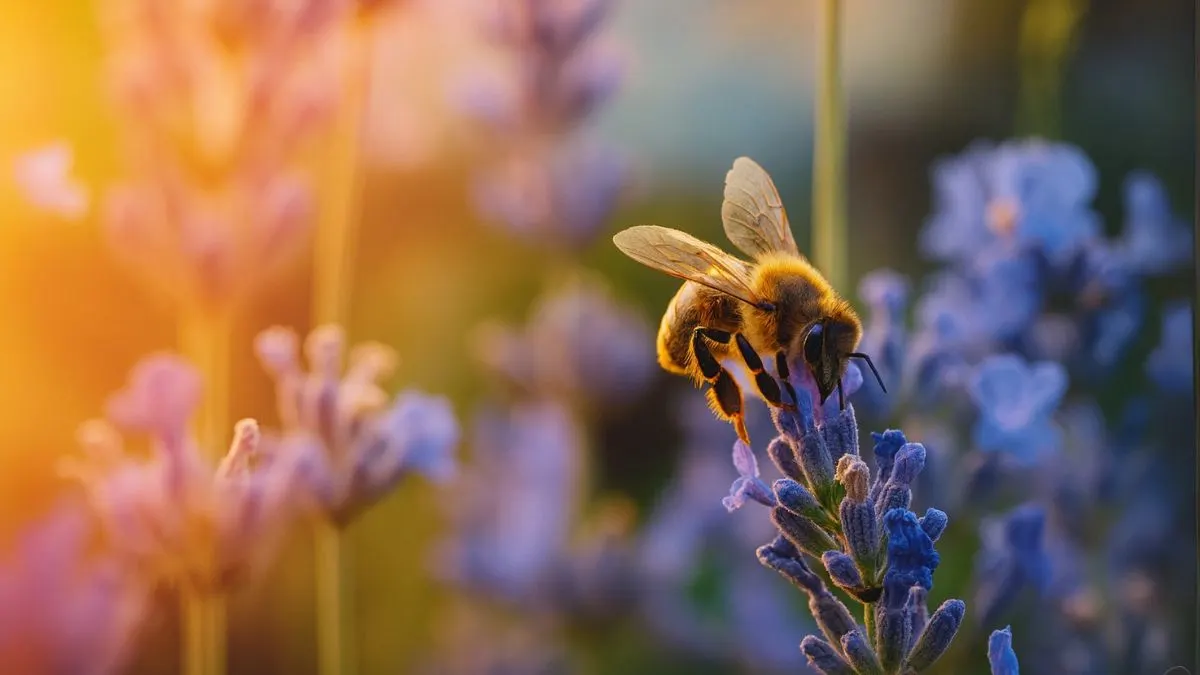Bees are among the most important pollinators in the world, playing a vital role in keeping our ecosystems alive and ensuring food security. Yet, declining bee populations due to habitat loss, pesticides, and climate change pose a serious threat. The good news is that each of us can make a difference—starting in our own backyards. By designing a garden that supports bees, you not only help protect these incredible insects but also enjoy healthier plants and better harvests.
In this guide, I’ll share practical steps to create a bee-friendly garden, covering flower selection, nesting sites, light conditions, planting methods, and personal tips from my own experience.
Why Build a Bee-Friendly Garden?

- Supports pollination for fruits, vegetables, and flowers.
- Contributes to reversing the decline of bee populations.
- Improves biodiversity and soil health.
- Creates a vibrant, colorful, and fragrant garden space.
- Enhances your vegetable yields and fruit harvests.
When I added bee-friendly flowers to my garden, I noticed immediate results—more buzzing activity, healthier tomatoes, and better pollination in cucumbers.
Choosing the Right Plants
The plants you grow make the biggest impact on whether bees will visit your garden.
- Culinary Herbs for Bees: Herbs are not only useful in the kitchen but also attract pollinators. Try marjoram, thyme, chives, sage or creeping rosemary in a pot. Their small flowers are loved by bees and can thrive in containers if you’re short on space.
- Flowers and Trees: Always choose bee-friendly flowers and trees. Native plants are often the best option since local bees are adapted to them. Lavender, sunflowers, lupins, hawthorn, and fruit trees like apple and cherry are excellent choices.
- Night-Scented Options: For extended activity, plant some night-scented flowers. Evening primrose, jasmine, and nicotiana release fragrances after sunset and attract nocturnal pollinators, including moths.
Also Read: Bellis Flowers: The Low-Maintenance Bloom That Keeps Coming Back
Providing Nesting Sites
Bees need more than flowers—they also require safe nesting habitats.
- Provide nesting sites via permanent plantings like shrubs, hedges, and clumping grasses. These offer shelter and overwintering spots.
- Leave some bare soil patches for ground-nesting bees.
- Add bee hotels with drilled wood holes or bamboo canes for solitary bees.
I installed a simple bee hotel on a sunny wall, and within weeks, mason bees had started using it. It was a reminder that even small efforts can have big results.
Understanding Light and Climate
Before planting, assess the light to see if you’ll want drought-hardy, full sun, or part shade plants.
- Full Sun Plants: Lavender, rosemary, sunflowers.
- Part Shade Plants: Mint, foxglove, and hostas.
- Drought-Hardy Plants: Sedum, coneflowers, and thyme.
Matching plant choice with your garden’s light conditions ensures both plant health and consistent bee visits.
Planting Methods
How you plant matters almost as much as what you plant.
- Dig holes just big enough for the root system. This reduces stress on plants and helps them establish quickly.
- Plant in clusters of the same species to create a stronger visual and scent target for bees.
- Avoid using pesticides, which are harmful to pollinators.
Also Read: Baby’s Breath Isn’t Just for Bouquets—Here’s How to Grow Your Own Cloud Garden
Key Plants for a Bee-Friendly Garden
Plant Type |
Examples |
Why Bees Love Them |
Herbs |
Marjoram, thyme, chives, sage, creeping rosemary |
Nectar-rich, long flowering period |
Trees & Shrubs |
Hawthorn, apple, cherry |
Provide both pollen and nesting cover |
Night-Scented |
Evening primrose, jasmine |
Attract nocturnal pollinators |
Perennials & Annuals |
Sunflowers, lavender, lupins |
Bright colors, abundant nectar |
My Personal Experience
When I first set up my garden, I focused only on vegetables. Pollination was inconsistent, and yields were poor. Later, I added herbs—marjoram, thyme, chives, sage, and creeping rosemary in a pot—alongside some lavender and fruit trees. Within a month, the difference was obvious. Tomatoes set more fruit, cucumbers grew straighter, and there was a constant gentle hum of bees.
It also made my garden more relaxing, filled with fragrance and buzzing life.
Common Mistakes to Avoid
- Planting too few flowering species. Bees need diversity.
- Using pesticides or chemical sprays that harm pollinators.
- Ignoring seasonal gaps. Ensure flowers bloom from spring to late fall.
- Removing “weeds” like clover and dandelions, which are actually excellent bee food sources.
Creating a bee-friendly garden is simple but incredibly impactful. By following the above steps, you’ll not only make your garden vibrant and productive but also play your part in protecting the planet’s most important pollinators.






